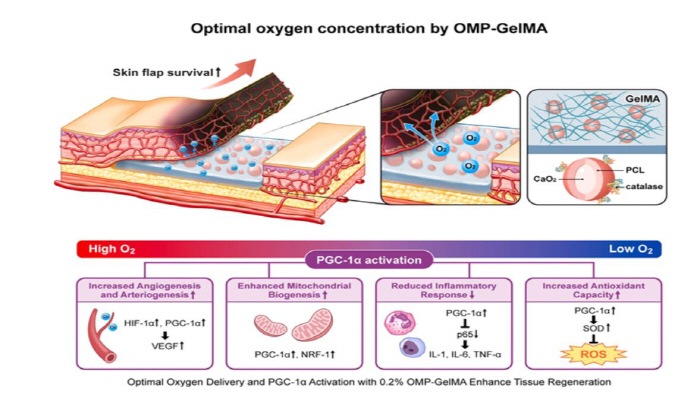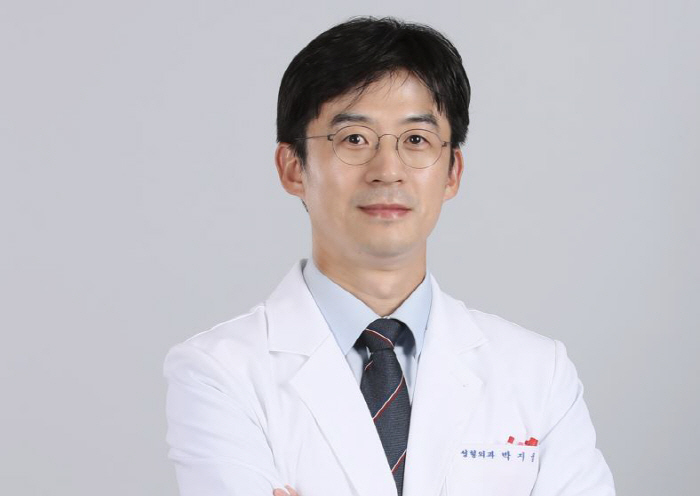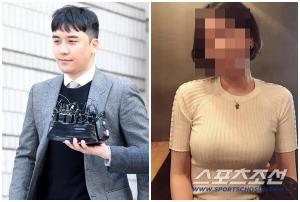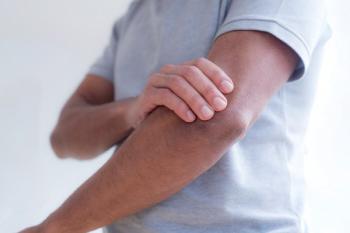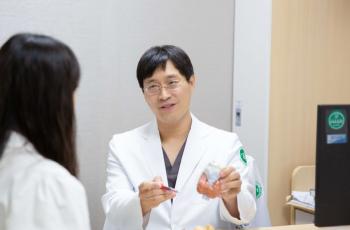Development of Oxygen-generating Hydrogel to Help Regenerate Skin Tissue...Presenting the possibility of smart biomaterials
Jul 25, 2025
|
A research team led by Professor Park Ji-woong of plastic surgery at Boramae Hospital in Seoul, operated by Seoul National University Hospital (Professor Jeon Sung-mi, researcher Lee Mi-hyun) developed a smart hydrogel that slowly supplies an appropriate amount of oxygen when inserted into the body through joint research with Professor Su Lyon Shin of Brigham and Women's Hospital (Dr. Jeong Seol-ha).
This hydrogel has been shown to effectively reduce tissue damage caused by a lack of blood flow at the tip of the skin's flap.
The hydrogel, created by the research team, contains fine particles that produce oxygen. But the important thing here is not just to create oxygen. The particles are also coated with enzymes that remove toxic substances that can be produced while generating oxygen, so they are designed not to harm tissues. The particles produced in this way were placed in a gelatin-based material to form a hydrogel, and when inserted into the skin, oxygen is released at a constant rate.
The researchers confirmed the effectiveness of the hydrogel in experiments using rat skin tissue. In particular, when the oxygen generation concentration was set at 0.2%, it was found that the survival rate of the skin flap was the highest and the blood flow was maintained the most active.
On the other hand, as the oxygen concentration increased to 0.5%, the inflammation intensified and the tissue was more damaged. This shows that giving too much oxygen can be harmful. In the end, experiments have proven that supplying oxygen as precisely as the tissue needs is the key to the therapeutic effect.
The results of analyzing changes within the organization were also noticeable. Signal proteins (VEGF) that make new blood vessels, genes that activate mitochondria that make cell energy (PGC-1α, NRF-1), and antioxidant enzymes (SODs) that reduce oxidative stress have all been activated, and indicators that cause inflammation have been noticeably reduced. The overall tissue recovery mechanism worked in all directions, such as the suppression of the cell dying on its own.
This study suggested the possibility of smart biomaterials that help recovery by actively controlling the microenvironment in tissues, not just treatment aids.
Professor Park Ji-woong said, "It can be applied to various diseases such as diabetic ulcers and ischemic muscle diseases. Biomaterials that precisely control oxygen can be an important weapon in regenerative medicine."," he said.
Meanwhile, the results of this study were recently published in the global biomaterial journal 'Bioactive Materials'.
|
This article was translated by Naver AI translator.
